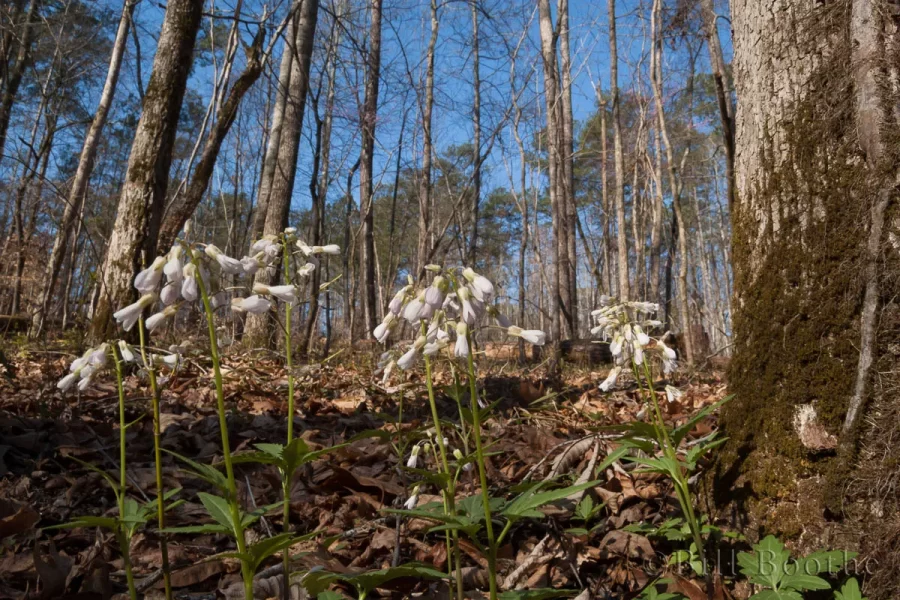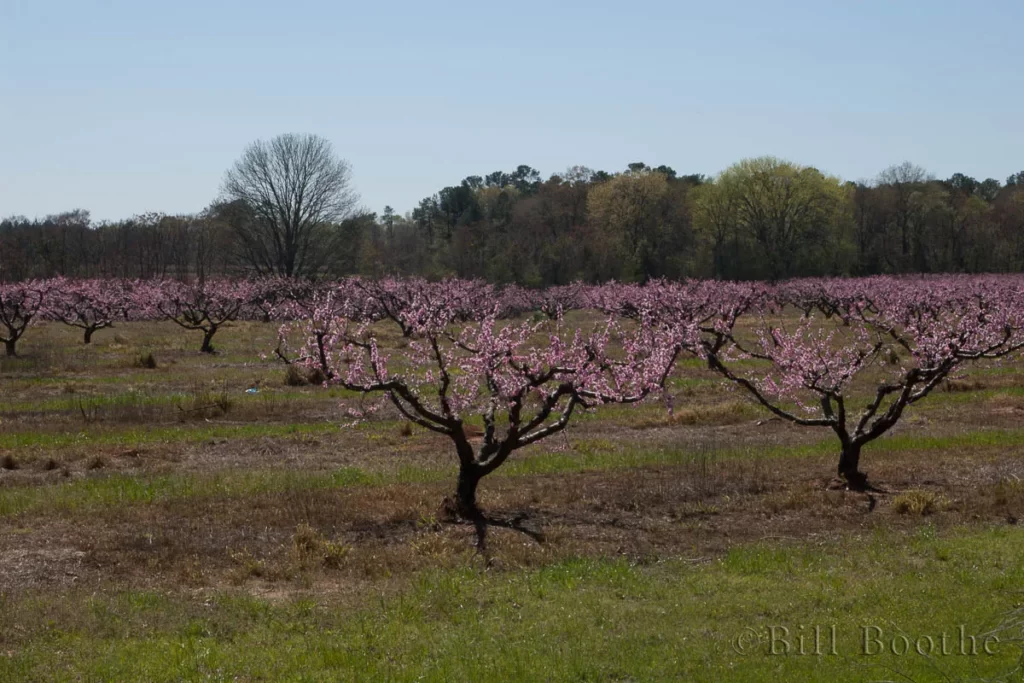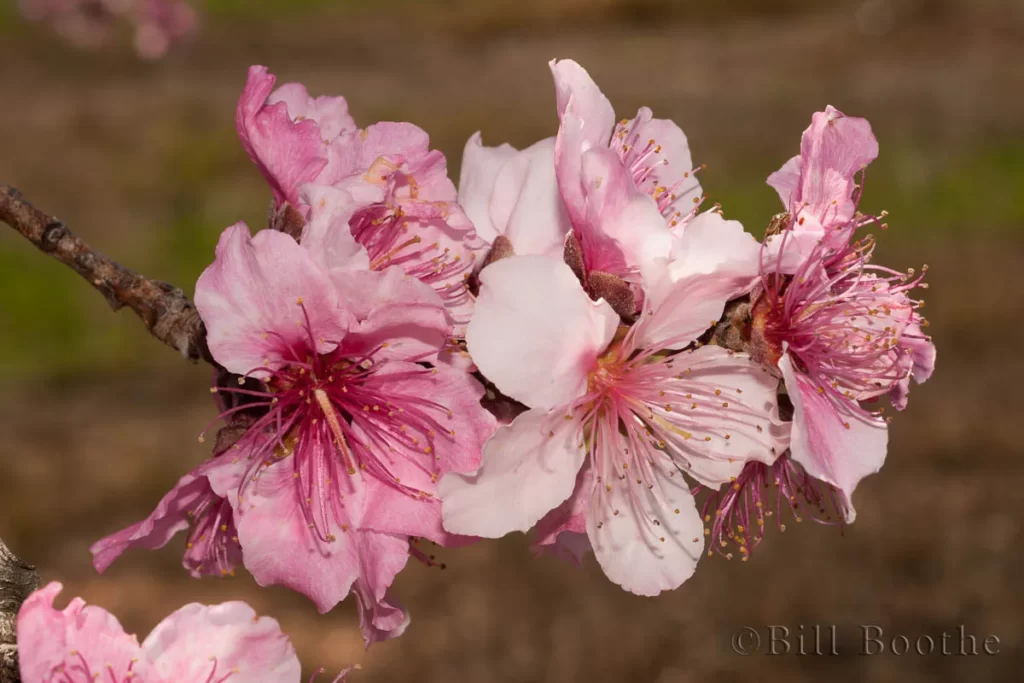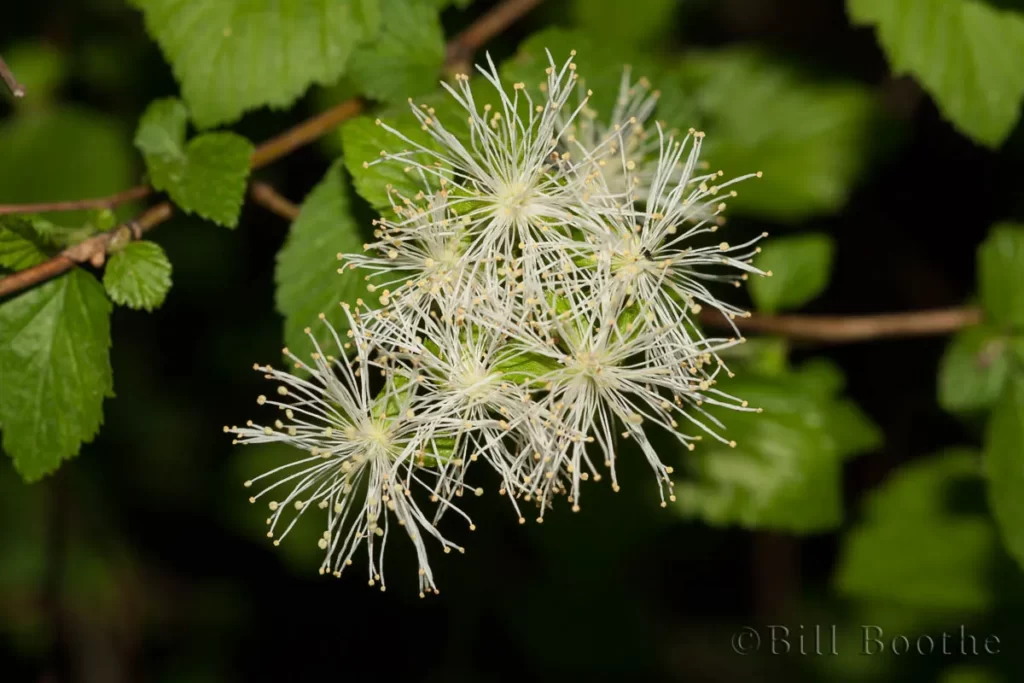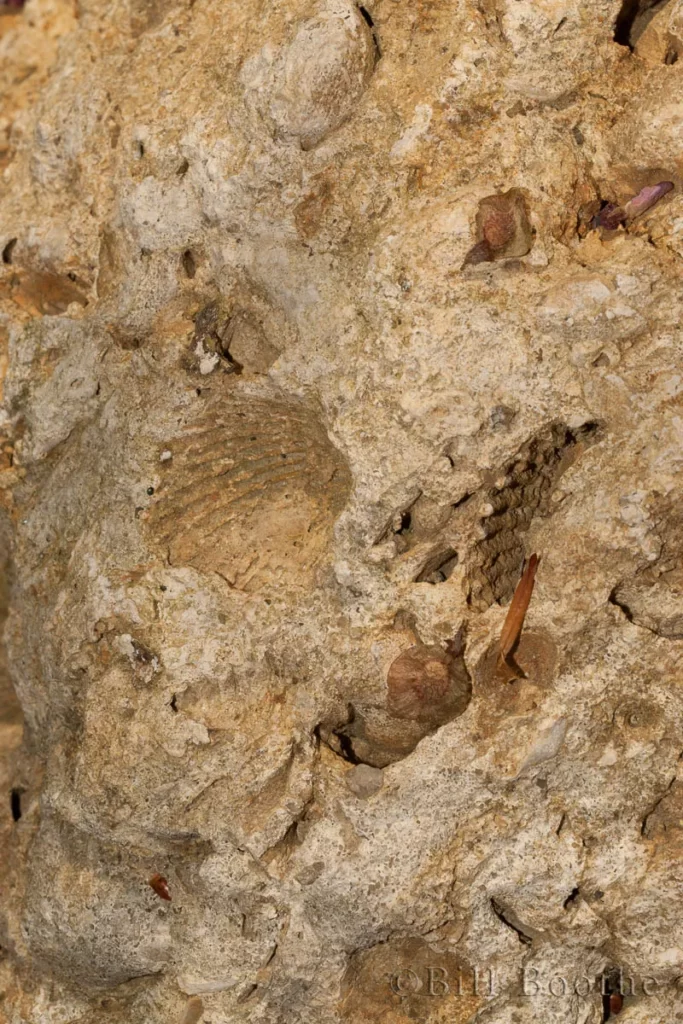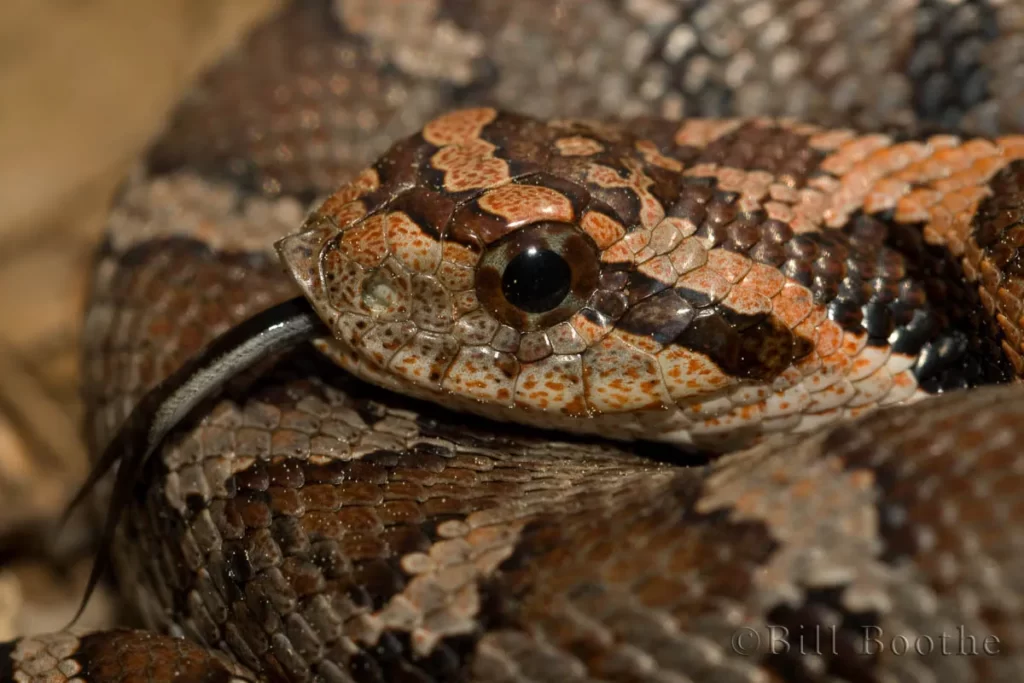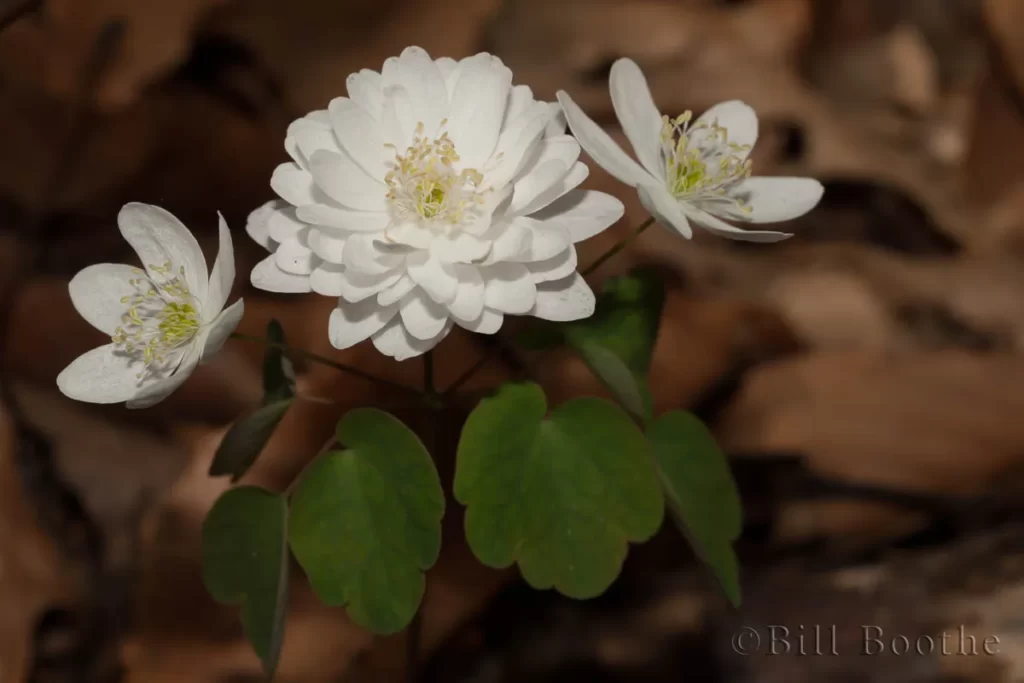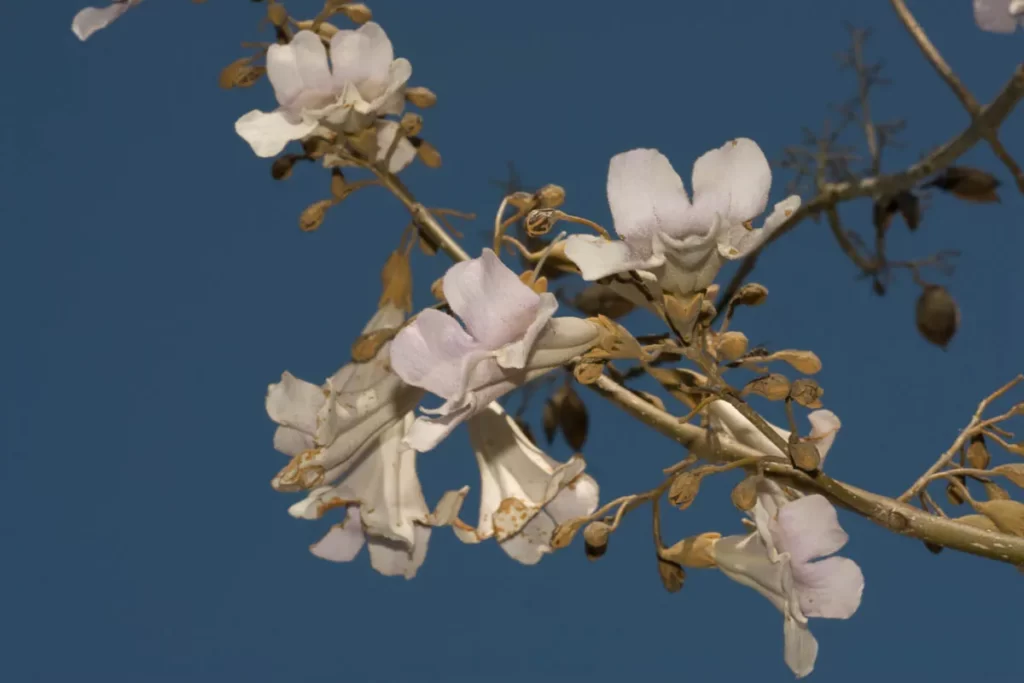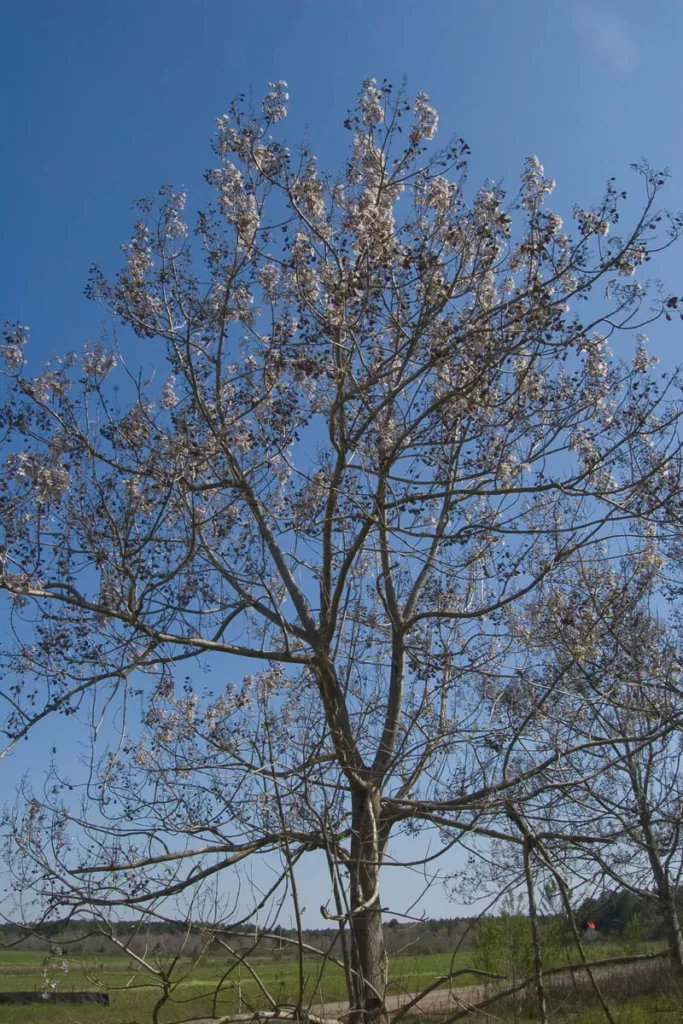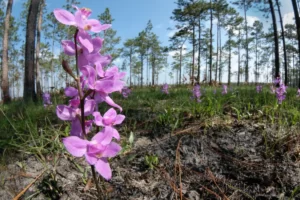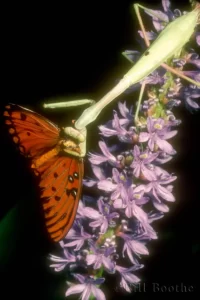My wife Marcia and I have just returned from a weekend trip to Georgia which included visits to Montezuma Bluffs Natural Area and Indian Springs State Park. As President of the Hairstreak Chapter of the North American Butterfly Association, I organized this casual trip to see the Falcate Orangetip Butterfly. This species used to be seen in Florida along the Ochlockonee River, but has not been seen in recent years. Its demise in Florida may have been due to over-collection of the species. Each spring, we still look for the caterpillars and butterflies whenever we see stands of Cardamine, its host plant.
Montezuma Bluffs Natural Area
We passed stately historic homes and orchards of beautiful blooming peach trees (Prunus persica) as we traveled north of the town of Montezuma toward the Montezuma Bluffs Natural Area on Friday afternoon. There is no sign announcing the Natural Area, only a sign for Crooks Landing.
Almost immediately after stepping out of the vehicle near the boat landing, we saw several Falcate Orangetips flying along the trail. Several pairs were courting.
That evening, Sonny P., Marcia, and I met Chris I., our host. He lives less than a mile from Montezuma Bluffs Natural Area and has “adopted” this site. His primary knowledge is botanical, but he also knows a lot about its natural history, geology, and fauna including the butterflies.
After eating dinner with Chris, he graciously took us to his home to see some of his plants in his landscape, many of which he has grown from seeds and cuttings. Of special interest to Marcia and me were Alabama Snow-wreath (Neviusia alabamensis), Alabama Croton (Croton alabamensis), Zizia (Zizia sp.), and Common Pawpaw (Asimina triloba) that were all blooming.
Joining us on Saturday at Montezuma Bluffs were Marty and Jim Q., and Cynthia and Eric S. Since it was too cool for the butterflies to be flying yet, we botanized until noon. We were very fortunate to have Chris lead us to all the neat spots of Montezuma Bluffs Natural Area that we would not have seen otherwise. During our hike, we saw several habitats including beech-magnolia slope forest, limestone bluffs, and the river floodplain along the Flint River.
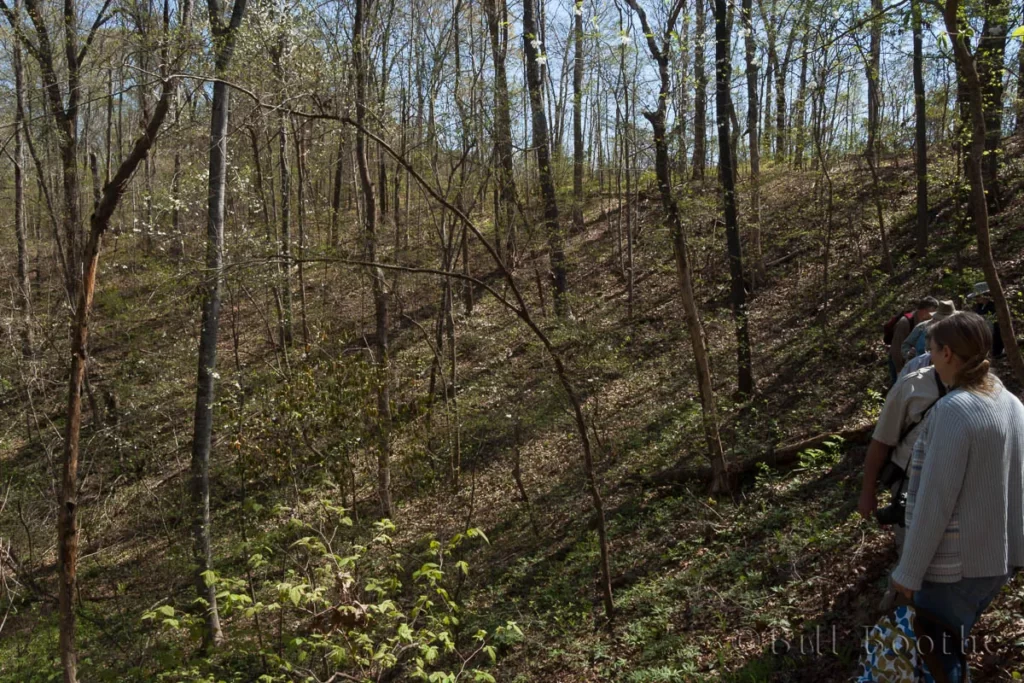
We saw quite a few Relict Trilliums (Trillium reliquum), one of the other reasons Bill and I wanted to visit Montezuma Bluffs. We also saw a Relict Trillium with a yellow flower. The Relict Trillium, sometimes called Confederate Trillium, is a federally endangered species found mostly in Georgia, but also in a few counties of South Carolina and eastern Alabama. A relict species is a plant that has survived in isolation from an earlier time. In this case, it is a northern species that remained after the retreat of the glaciers.
The limestone rocks in the area support many of the same species seen locally at Aspalaga Landing such as Round-lobed Liverleaf (Anemone nobilis). Also on the rocks was Alumroot (Heuchera americana), not found in Florida. The presence of many shells in the rocks also shows that Montezuma Bluffs was once covered by an ocean.
The plants in the beech-magnolia slope forest were very familiar to us although some were different species or uncommon in Florida. Trees and shrubs we saw in addition to the predominate Beeches and Magnolias were Eastern Hophornbeam (Ostrya virginiana), Two-wing Silverbell (Halesia diptera), Dogwood (Cornus florida), Eastern Redbud (Cercis canadensis), Shagbark Hickory (Carya ovata) (not found in Florida), Needle Palm (Rhapidophyllum hystrix), and Dwarf Palmetto (Sabal minor).
On the slope floor, we saw Heartleaf Ginger (Hexastylis arifolium), Wild Blue Phlox (Phlox divaricata), violets (Viola spp.), Atamasco Lily (Zephyranthes atamasca var. atamasca), Bloodroot (Sanguinaria canadensis), Bedstraw (Galium sp.), American Squawroot (Conopholis americana), Grape Fern (Botrychium sp.), and Cutleaf Toothcup (Cardamine concatenata), the local host plant of the Falcate Orangetip.
An unexpected botanical bonus was to see the Spotted Geranium (Geranium maculatum) in bloom. This is found in only one Florida county.
Chris showed us one area that he has been trying to keep cleared of the invasive kudzu vines. The hard-earned reward was one slope densely covered by Smooth Solomon’s Seal (Polygonatum biflorum) and another slope almost entirely covered by Perfoliate Bellwort (Uvularia perfoliata). Both of these species are uncommon in north Florida and to see them en masse was quite awesome.
Elsewhere, we saw Golden Ragwort (Senecio aurea) and White Blue-eyed Grass (Sisyrichium albidum), both uncommon in Florida.
After our hike, we concentrated on butterflies and we did see more Falcate Orangetips. We also looked at many of the Cutleaf Toothcups (Cardamine concatenata) in hopes of finding a Falcate Orangetip caterpillar. There was a brief flurry of excitement when Jim did find a caterpillar on the host plant, but it turned out to be a geometrid moth caterpillar.
Another good find was a tattered Mourning Cloak that was flitting around an oak tree. It liked to sit in the hanging Spanish Moss, but did land on the tree to be photographed.
Probably the best find of the trip (other than the Falcate Orangetips of course) was an Eastern Comma sighted by Eric. No photos for me, but still a joy to see one. Sonny has graciously shared his photo. Other species seen were the Pearl Crescent and Lace-winged Roadside Skipper.
During a final jaunt along a trail, Cynthia spotted an Eastern Hognose Snake, a great way to end the day’s trip.
Indian Springs State Park
Everyone else returned home on Saturday, but Bill and I continued to Indian Springs State Park where we briefly crossed paths with Virginia C., another Chapter member, as she was leaving after having successfully found Falcate Orangetips also.
We saw the Falcate Orangetips in an open grassy area near the start of the nature trail late that evening. The next morning, we walked the nature trail, planning to see the butterflies on the way out.
The nature trail winds through a beech-magnolia slope forest where we an American Trout Lily (Erythronium americanum) not found in Florida, the leaves of Spotted Wintergreen (Chimaphila maculata), blooming Cutleaf Toothcup (Cardamine concatenata), Violets (Viola spp.), Bedstraw (Galium sp.), Rue Anemone (Thalictrum thalictroides), Round-lobed Liverleaf (Anemone nobilis), and lots and lots of Mayapples (Podophyllum peltatum) just beginning to bud out. A botanical oddity on the trail was one double-flowered Rue Anemone, the first seen by Marcia and me.
It was still in the upper forties when we returned to the grassy area where we saw the butterflies the previous evening. We saw no butterflies, but did see some typical plant species in the grassy area: morels (Morchella sp.), field pansies (Viola bicolor), bluets and innocence (Houstonia spp.), Japanese Mazus (Mazus pumilus), henbit (Lamium amplexicaule), and clovers (Trifolium spp.).
Indian Springs State Park is one of the oldest parks in the nation. While waiting for warmer temperatures, we took a gander at the springs and old CCC (Civilian Conservation Corps) buildings.
Homeward Bound
At 11:00 a.m., it still was only fifty degrees, a bit too cool to see any flying butterflies, so we decided to head homeward with another stop at Montezuma Bluffs to try to see the Comma (unsuccessful).
On the way home, we took a short stop at the Andersonville National Cemetery.
We also saw our first huge stand of blooming Princesstrees (Paulownia tomentosa), an invasive species, along U. S. north of Albany.
